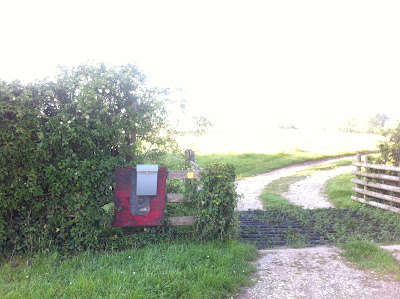Last year we had a reasonable crop of blackcurrants so I decided to have a go at making some blackcurrant vinegar.
I made a small batch in a kilner jar - just cider vinegar, blackcurrants and some sugar. Initially I was filled with enthusiasm and remembered to give the jar a shake each day. After a week or two I forgot all about it.
Until yesterday, when I was cleaning that part of the pantry. Ooops!
It is a large pantry, time was when I would empty the entire thing and clean it out all in one day. Those days have passed, I now do a shelf as and when I get the urge to do it...obviously that is not as often as I should!
I opened the lid expecting to find a mouldy mess but, no, the vinegar is wonderfully dark and delicious. The blackcurrants should have been removed after a few weeks, but they were left in all the time. No harm done, in fact when I tried one or two they were delicious.
I strained the liquid and poured it into a couple of small sterilised wine bottles. It will be used on salads and as a dipping sauce. Best of all, unlike so many Balsamic vinegars, this didn't trigger a bad headache, and that has to be a bonus.
The signs are looking fairly good for a reasonable crop of blackcurrants this year. Fingers crossed!
Several years ago I made some vanilla essence, just vanilla pods and vodka. It needed plenty of time to mature but it is excellent. Much better than the commercial ones.
Time to get another batch of that made then I can let it sit and mature in peace.
A couple of months ago I made a sourdough starter (again) followed all the directions, nurtured it and coddled it, then forgot it. Dead as a do-do (or should that be a dough-dough) it just fell off my radar.
I could blame it on the fact that George suddenly developed an interest in baking bread (it soon waned) and he took over the bread-making for two or three weeks, but I won't.
I will own the neglect. I totally forgot it was there.




.jpg)













